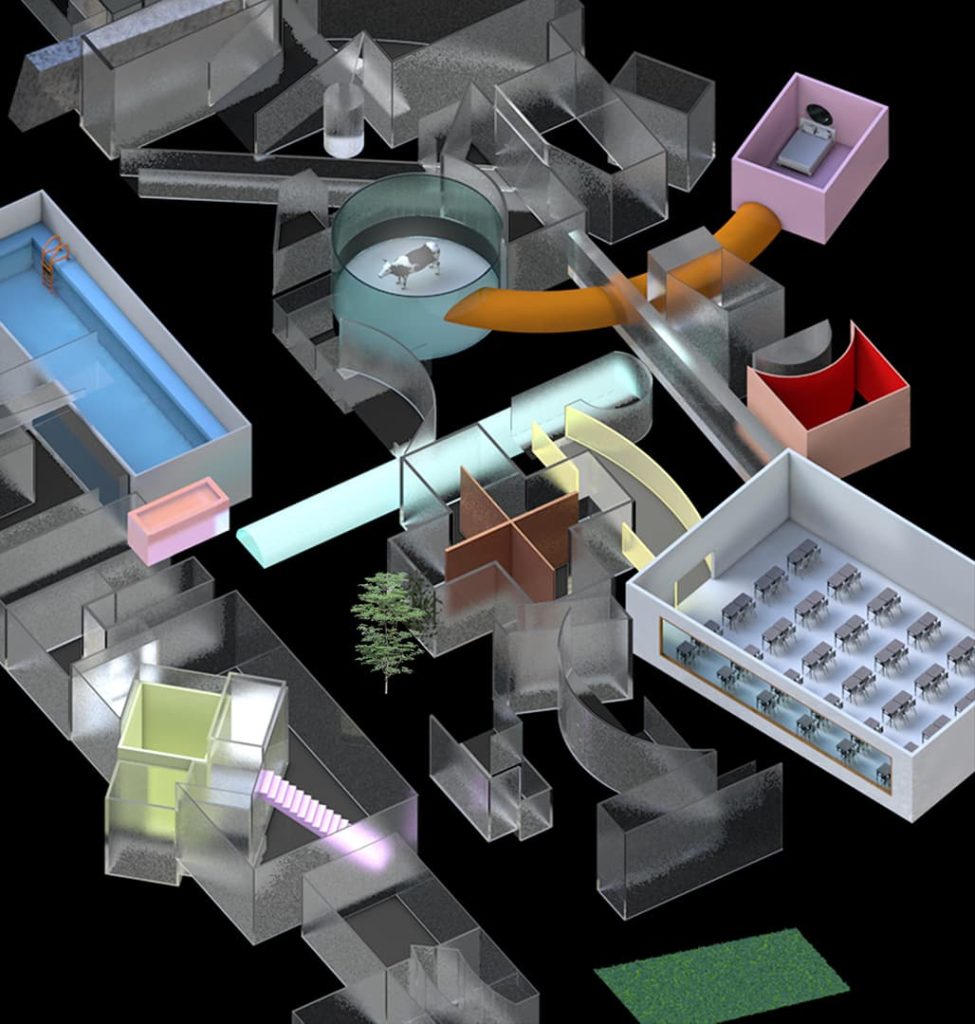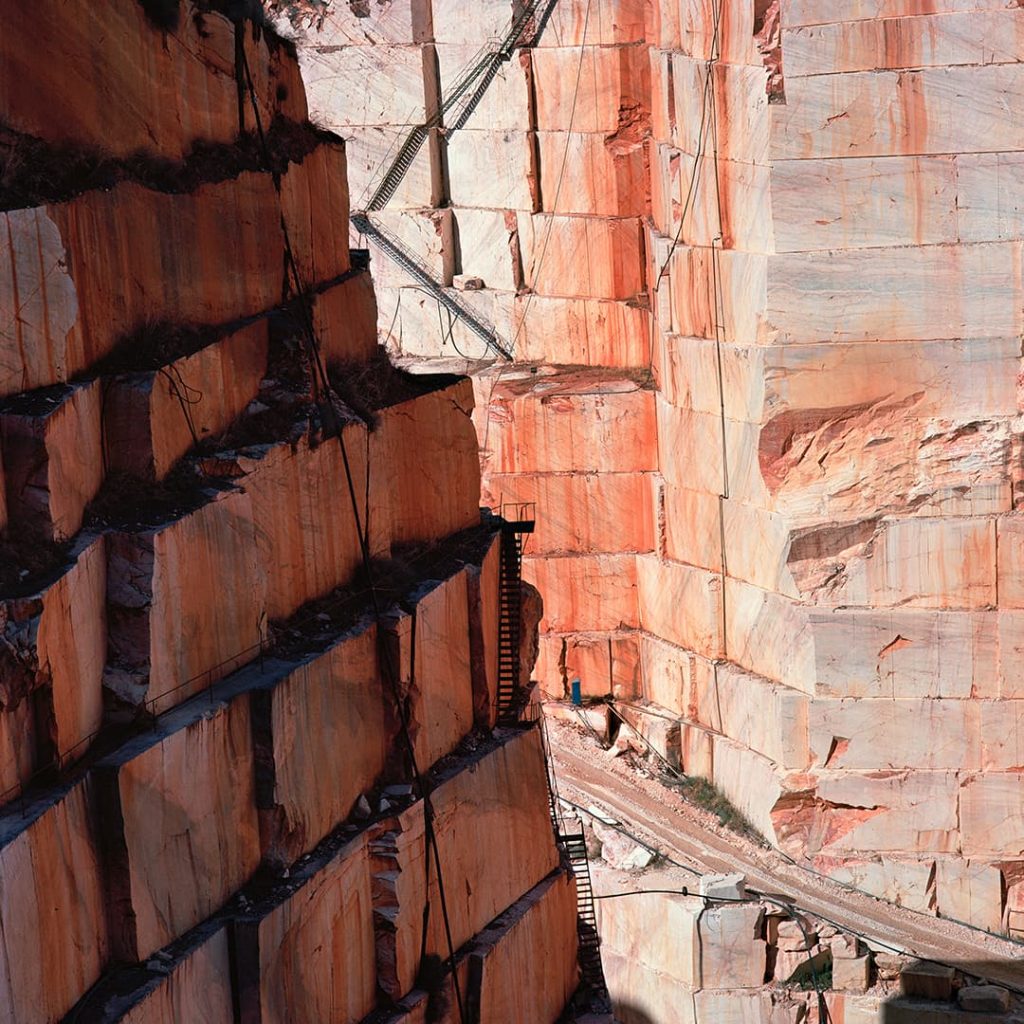Interview by Daniela Silva

Cristina Verissimo and Diogo Burnay are a pair of Portuguese architects who combine research, teaching, and practice. Over the last few years, they have demonstrated how the diversity of the countries where they work, as well as the various ways in which they practice architecture, has enriched their curriculum. They are the Chief Curators for the 2022 edition of the Lisbon Architecture Triennale.
The Lisbon Architecture Triennale will run from October to December 2022, with the goal of researching, fostering, and promoting architectural ideas and practice. Every three years, it hosts a major platform for debate, discussion, and transmission of architecture across geographic and academic lines.
Terra (Earth) will be the central theme of the sixth Lisbon Architecture Triennale. It investigates how new paradigms are altering our perceptions of place on a globalized planet. In this situation, architecture has the ability to both grounds and uplift us. This parallel background and foreground condition of architecture investigates links and systems in order to facilitate transformation in a variety of socioeconomic contexts around the world.
Four exhibitions, four books, three awards, three days of conferences, and a selection of independent projects make up the program. Terra comprises a declaration of intent and a call to action as an international platform that stimulates questioning around research and practice. It suggests a shift from the present fragmented and linear system model, which is defined by resource overuse, to a circular and holistic system model, which is motivated by a larger and deeper balance between communities, resources, and processes.
Terra proposes that, following a period of closure due to the pandemic, the future be re-evaluated by intersecting and exchanging knowledge and practices capable of coexistence, so contributing to a more sustainable future for the world and its inhabitants. Terra looks at how climate cha(lle)nges, resource scarcity, and social and environmental inequity are all interrelated. A paradigm shift from a linear growth model (“cities as machines”) to a circular evolutionary one (“cities as organisms”) is required to comprehend these complex situations.
The Triennale’s goal is to provide an open forum in which many voices and ideas can coexist beyond their seeming dualities while honouring everyday life as well as ambitions for a variety of futures in a diverse society.



Right: Untitled – Open Space Office series – Portugal (2011) © Tito Mouraz

What set you off on your career paths? What did you envision for your future when you started your path in this field?
Cristina Verissimo (CV): architecture discipline is a continuous learning process and throughout our careers, the goal was to keep on learning from different fields of architecture so this is a new experience and this is what I’m trying to do is to learn and enjoy every minute of it and enjoy the path and enjoy every minute the past.
Diogo Burnay (DB): a curiosity and desire to learn about and bring together many different sensibilities from diverse fields, as architecture is also a synthesis of multiple disciplines and fields such as humanities, sciences, engineering and artistic concerns and possibilities. The path towards being involved with teaching always seemed a simple natural extension of this.
Your professional experience touches on various aspects of architecture as a discipline, including research, teaching, and project activity in Portugal and abroad. How did your backgrounds influence the curatorial process for the Triennale?
The most significant influence is certainly the determination for this Triennale 2022 to be more extroverted, diverse and inclusive. We always aspired to bring to Lisbon multiple perspectives on the topics of this Triennale edition ranging from the circular economy applied to architecture and urbanism, to new ways of addressing inequalities, to how architecture can work as a suturing tool for the informal city, to the visionaries who conceived new models and prototypes to debate planetary strategies.
This international forum tackles how these issues are being addressed and explored across the planet by multiple generations, researchers, students and practitioners.
You both are very versatile architects: a wide range of built projects, teaching, research, and now curators. What does architecture mean to you? What do you think makes the discipline of architecture equipped to contribute to a more sustainable future?
We advocate that Architecture is a social and public art. Architecture can also be an active agent for social change to improve a family and/or community life, by providing a sense of belonging. Architecture always deals with resources, materials, fabrication and construction. In this way, it can have a major impact on both global and local economies and communities. This 6th edition of Lisbon Triennale that focuses on the future of ecology in architecture aims to inspire new methodologies and new approaches that are more engaged with efficient use of resources and contribute to more ecological futures for all of us, looking at a diverse range of examples and projects that envision this call for action across this wonderful planet.
As curators and architects, what were the main decisions that led to the definition of the theme for the Lisbon Architecture Triennale 2022? Can you tell us about the process and the choices that shaped this edition’s concept and content?
The title for this Triennale is Terra. With different meanings, depending on the scale and the observer, Terra expresses territory, city, landscape, the place where we belong or a continent seen from the sea. It may be a habitable planet or matter for cultivation. It may be in excess or lacking, an obstacle or an element in the construction of communities.
A key choice was to dedicate the Triennale 2022 as an opportunity to enquire into the crucial role of architecture to address climate cha(lle)nges, pressure on resources, and socioeconomic and environmental inequities which are profoundly intertwined. It seeks a paradigm shift from a linear growth model represented by the idea of “cities as machines” to a circular model where cities are considered organisms.
Another early decision was to invite curators from different parts of the world. This was essential to ensure that Triennale 2022 operates as plural and global platform. The process has been a very collaborative one, building a strong sense of teamwork with everyone from the Triennale, the exhibitions’ curators and designers, and the cultural institutions and partners involved. This regular dialogue is contributing to an articulated perspective from the early ideas to the fully developed curatorial projects for all the main exhibitions, publications, and talks.
The program is quite broad: it consists of four exhibitions, four books, three awards, three days of conferences and a selection of Independent Projects. What were some of the challenges that you both faced while preparing the Triennale? Where did the title Terra come from?
One of the challenges was to start this endeavour in 2020 by working together remotely. We always aspired to have 4 very different but complementary exhibitions with unique approaches. The title, main topics and the curatorial team were decided through extensive research and a participatory process. We all felt that Terra embodies what brings all of us together, as well as it refers to a sense of belonging, of something that grounds us all, and it also refers to matter. Another important consideration is that for the first time we have a Portuguese (and Latin) title with no translation.
Another novelty is that the main exhibitions are presenting a shortlist of the Universities’ competition projects developed by students as well as research units. The Independent projects are the outcome of an international open call. The goal is to share the stage with emergent talents that provide a deeper and lively debate. We were impressed by the quality of the 67 submitted applications.
This explains why we decided to expand the selection to 16 instead of the 12 planned. These will take place in different locations within Lisbon and neighbouring areas encouraging our visitors to explore the city in new ways in each edition and wander around. The Palácio Sinel de Cordes where Lisbon Triennale is based will serve as a gathering point hosting several Independent Projects as well as a pop-up bookstore and gastronomical lab.
Terra expresses territory, city, landscape, the place where we belong or a continent seen from the sea. What will the public experience at the 6th edition of the Lisbon Architecture Triennale, next fall? What can´t people miss seeing in this edition of the Triennale?
It depends on your own preferences. One can choose a more lively and hectic experience coming for the three-day openings where we have a full house with totally free admission (29 September to 1 October), or rather enjoy calmly the showcases and installations over the course of 9 weeks (Until 5 December), or even join the Talk, Talk, Talk in late October that can be combined with guided tours. And not to mention the well-known coffee pauses on the many Lisbon gardens and terraces.
Because architecture is part of everybody’s life, this festival is designed for a wider audience including in its programme activities for children and schools. The public will experience these different realities and will hopefully feel inspired to act and be more involved in these transformation processes.
What would it be your biggest curating extravaganza?
To be able to present in a public space, one of the most significant visionary and technological innovations of the late 19th century, the Solar Trap (Pyreliophorus) won 2 gold medals, as it was a star at the Universal Exhibition of St Louis in 1904, and was invented by the Portuguese Manuel António Gomes, best known as Father Himalaya, a pioneer in Portugal of solar energy and other uses of renewable energy.
You couldn’t live without…
Planet Terra.






